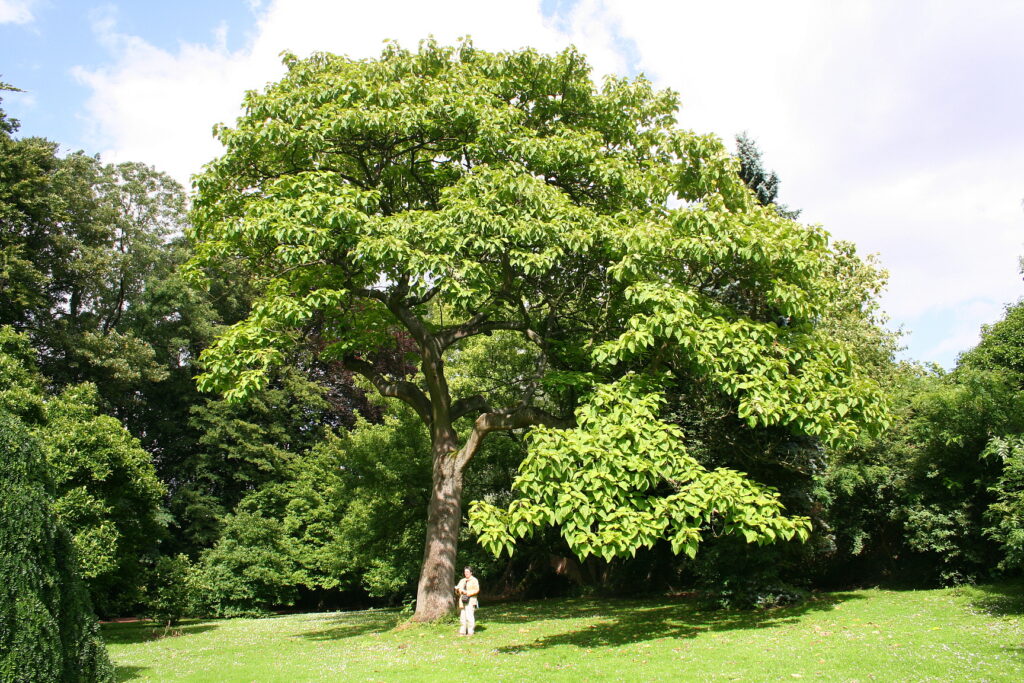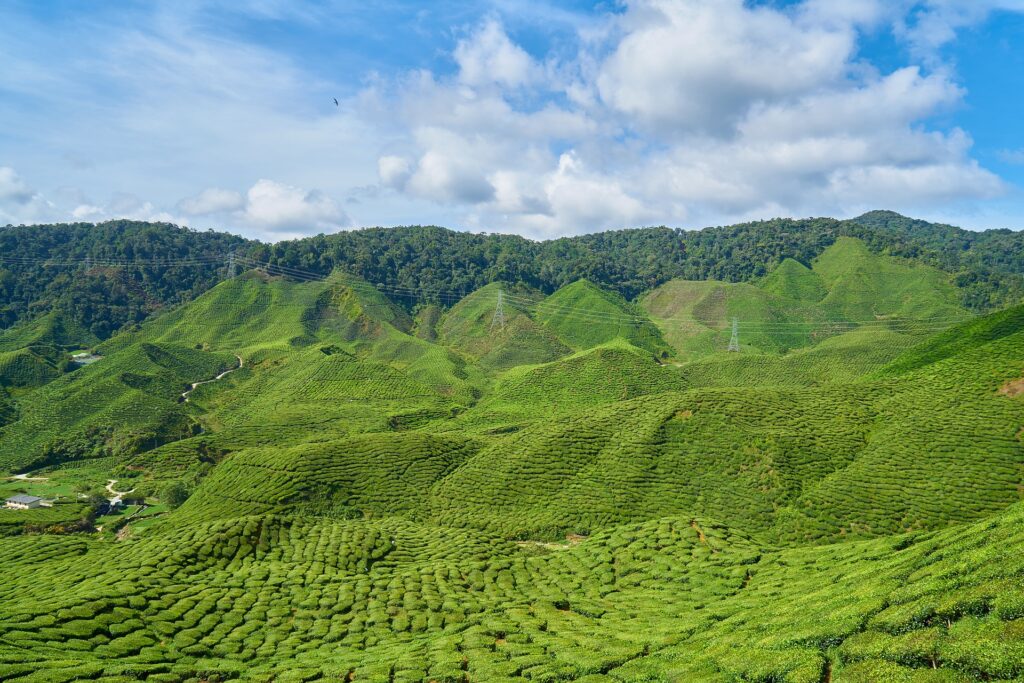What Is Deforestation?
Deforestation is the practice of intentional removal of large stands of trees from forests in order to use or sell the removed forest products and clear the land for other non-forest activities. As a result, deforestation is one form of land-use and land-cover change where the purpose of the given land changes from the production of forest commodities and services to non-forest ones.
Even though forests are notable providers of goods and services all around the world, deforestation has been ever-increasing as a serious threat to the survival of living beings on the planet. Among numerous causes leading to the deliberate clearance of forests by humans, agricultural expansion ranks on the very top. The majority of forest area being cleared today is being converted into agricultural lands to produce commodities like soy, palm oil, coffee, and tea.
The majority of forest area being cleared today is being converted into agricultural lands to produce commodities like soy, palm oil, coffee, and tea.

Deforestation In Tea Farms.
Although tea as a beverage is seeing an increasing presence in the West, the global production, as well as consumption of tea, is largely dominated by the Eastern countries from historical times till date.
Prepared from the leaves of the tea plant (Camellia sinensis), tea has a somewhat astringent flavor and induces a sense of calm alertness as it contains caffeine and theophylline.
Much of the concern surrounding the tea industry is related to social sustainability regarding working conditions and wages of tea farmworkers. However, the environmental concern, especially the extensive deforestation in the past that has led to the existence of vast expansion of tea gardens as well as the deforestation that is still occurring to create more and more plantations in established and new producing countries and regions and that should not be ignored.
Since tea plants are cultivated and harvested regularly for numerous years, deforestation done for cultivating tea crops is permanent. As a result, it has negative impacts on the surrounding environment and the ecology of the region for decades and centuries to come. The faunal and floral biodiversity is severely affected and reduced.
Moreover, large-scale tea factories are heavily energy-dependent for the processing of tea leaves as traditional techniques are almost completely replaced by huge modern machinery and equipment. Fuelwood is extensively used in the process of drying the leaves thus often further increasing deforestation.

How To Prevent Deforestation In Tea Farms?
Thousands of acres of previously forested lands in several countries have already been converted into tea farms, commonly known as tea gardens in the hills. So, the prevention of deforestation in tea farms is an urgent matter. This can be achieved when proper awareness about the harmful impacts of deforestation is disseminated to the potentially vulnerable regions, backed by strong national, regional, and international laws, policy frameworks, and trade practices in the tea industry.
In addition to that, strong scientific research followed by innovation in the cultivation, harvest, and processing of tea can lead to significant improvements in productivity throughout the value chain of tea, which will eventually result in reduced pressure on tea farms to acquire more lands through deforestation.
Tea farms very often use chemical pesticides and insecticides that degrade the quality of soil and reduce the likeliness of the land to be ever forested again. The harmful chemicals enter the ecosystem of the region and have degrading effects on surrounding lands as well. Responsible legislation and exploitation of resources will certainly help to prevent deforestation in the long run.
Prioritizing more sustainable and renewable sources of energy to meet the energy demand of the tea commodity supply chain will also have a significant impact on reducing the stress from forests.
Finally, the importance of consumer knowledge and wellbeing cannot be ignored in preventing deforestation in tea farms. As the admiration of tea is increasing at an exponential rate across the world, the conscious decisions of consumers to buy certified tea brands that are grown without clearing forests and degrading the environment will have a huge impact on how tea is grown in the future. Tea consumers have the power to slow down deforestation by choosing sustainably-grown deforestation-free tea brands.
Tea consumers have the power to slow down deforestation by choosing sustainably-grown deforestation-free tea brands.

How To Remedy Deforestation In Tea Farms?
Equally as important to the prevention of deforestation in tea farms is the remedy of the deforestation that has already occurred. Naturally, the most obvious task to be done to counter the effects of deforestation is to plant more trees. This can be done on degraded lands and on open areas in need of vegetative cover.
However, agroforestry as an evolving land-use management system opens new possibilities to rectify the effects of deforestation that have occurred due to the intensive monoculture of tea. Under this practice, tea farms carry out the cultivation of tea under the shade of trees that provide shelter. This practice not only increases the tree cover but also boosts tea production and has a positive impact on the soil and environmental condition of tree farms. Valuable tree species like Paulownia tomentosa and Taxus wallichiana diversify the sources of income generated through tea farms and also helps in making tea farms more self-sustainable.
Agroforestry as an evolving land-use management system opens new possibilities to rectify the effects of deforestation that have occurred due to the intensive monoculture of tea.
The loss of fertility of soil brought about by the use of weedicides and inorganic fertilizers can also be remedied by the use of organic fertilizers and manures produced on the farm itself.

Case Study: India
The strong admiration of tea by the people, the massive cultivation of tea as a cash crop, and the deforestation attached to its cultivation is notable in India. As the second-largest producer of tea in the world after China, India produces 1.2 million tons of tea every year, more than half of which is consumed within the country. Essentially, the tea market is a major part of the Indian economy as well as Indian culture.
Once cultivated as a cash crop for subsistence farming by individual farmers, the tea industry gradually led to thousands of acres of forests being cut down to established huge industrially run commodity tea farms and plantations.
As large tree gardens were being established throughout the nation, migration of people around the farms and factories in search of works led to even more clearing of forests for settlement purposes. Historical evidence shows the steep decline in the forest cover in areas where tea cultivation increased rapidly. The area under tea cultivation is still increasing with the growing demand for tea for both domestic and international consumption.
Government intervention in protecting the remaining forests has proved to be successful in reducing the rate of deforestation even though illegal deforestation is still a serious problem.
Similar patterns can be observed in neighboring countries like China and Sri Lanka, both world leading producers of tea.
Conclusion
The growing demand for tea has highlights in the need to understand how tea is cultivated, processed, and trader and how it affects the local economy and the environment. Deforestation in the production of tea is a serious threat to the environment which should be prevented with sustainability schemes that encourage responsible behaviours and fund the reforestation of affected areas.




